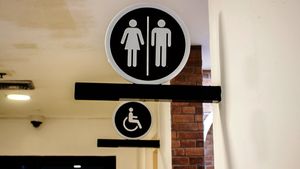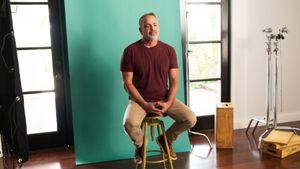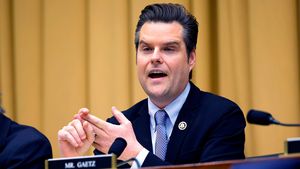As much of the country faces extreme heat, drought, and water restrictions, John Gidding has created a solution to help our yards survive the ever-changing climate.
Though he's best known for his appearances on HGTV shows such as Curb Appeal Xtreme and Curb Appeal: The Block, Gidding's career has long focused on sustainability. He recently partnered with ScottsMiracle-Gro to release a line of "Greenprints", which Gidding describes as "an eco friendly" approach to landscaping that is "water positive and shows homeowners a way of thinking a bit more progressively when it comes to their environment."
"Greenprints are basically Landscape Blueprints for homeowners to help them build drought-tolerant landscapes," he tells The Advocate Channel. "They're mainly meant to be thought of as inspirational plans for homeowners to just get an idea of the kind of pallets that they'll be working with, and then they can just express their own personality."
Launching August 1, the line features Greenprints for those living in California, Illinois, Texas, Florida, and Massachusetts, encompassing the many biomes found throughout the United States. This allows homeowners to "see the pallet that works best in their area with a whole bunch of native plants that will help pollinators."
"My number one push is how to create environments for pollinators, because they're so crucial for us," Gidding explains. "This is why when I created Greenprints, I really started focusing on the plants that are going to bring pollinators into our environments because they're such a lynchpin to the health of our communities."
As Gidding explains, pollinators such as bees are "crucial" to the environment, and they thrive in environments with native biodiversity — areas with diverse plant species that occur naturally. Unfortunately, many yards today are comprised of grass lawns, which discourage the growth of pollinator species.
Across the 48 states on US mainland, there's approximately 40 million acres of lawn, according to a 2005 estimate from NASA satellite data. That's 40 million acres less for pollinators, who are already at risk of losing their natural habitats.
"Without them, it's not just us that's in trouble, it's the collapsing bird populations. It's all the wildlife populations that are interconnected with one another," Gidding continues. "That's why it's so important to so to think of plants holistically. Not just the one plant that you thought was pretty, but rather the groups of plants that can help one another survive."
Gidding says that shifting away from traditional grass lawns and growing diverse plants won't just help pollinators — it will also cut down on water usage during a time where the resource is becoming more scarce. A recent "No Mow" movementhas taken a similar approach, encouraging homeowners to forgo taking care of their lawns in the traditional way, and to instead adopt practices that would save resources and crucial pollinator habitat, as well as their own time and energy.
"The mowing activity is an icon of all the the difficulty that homeowners have to put up with when they have the traditional lawn. But if they were to embrace a more water positive landscape, now we're talking about lawns that naturally don't need mowing because they stay low and include more water positive plants," Gidding says. "So, all these movements kind of go hand in hand."
While cultivating a sustainable lawn will save water, Gidding says it could also save money. As the effects of climate change become more prevalent, people in low-income communities disproportionately feel their impact. While the only real way to combat climate change is slashing greenhouse gas emissions, that doesn't mean that people are unable to make a difference in their own backyards — and it doesn't have to be expensive.
"Most homeowners are on a budget. And landscapes are a great, great place to start for homeowners on a budget simply because there's savings to be found," Gidding says, continuing, "I say pick a corner, and start making the changes there. Start thinking about drought tolerant plants and how you might end up saving water. And one great tip for homeowners — you don't have to buy. Plants grow from seeds, and that way you know you've got a bit more time to invest."
He adds: "You can find a rain barrel inexpensively. You can find a rotating composter inexpensive. So many options to pick from to that you know match your own personality or style. So, the choices are all out there. We just need to reach out and embrace them."
Gidding's Greenprints are available for free August 1 at www.thinkwaterpositive.com and downloadable through the landscape design app, iScape, where consumers can view the designs in their own yards through AR.



















































